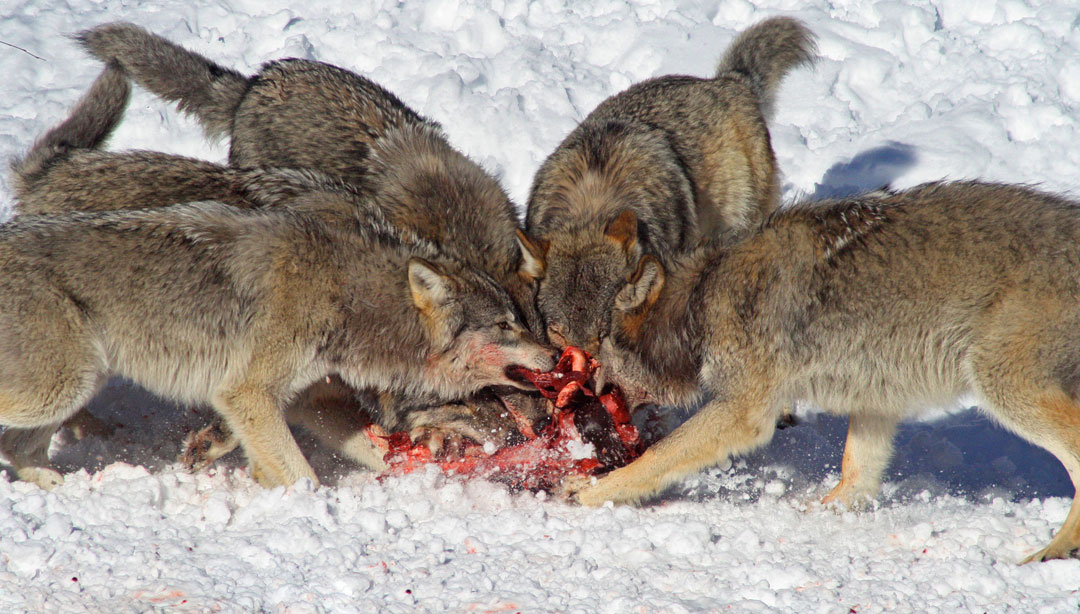USFWS Halts Gray Wolf Recovery Planning, Citing Species Recovery Amid Rising Conflicts
The U.S. Fish and Wildlife Service (USFWS) announced on November 3, 2025, that it will not develop recovery plans for gray wolves in Western states and Minnesota which are currently listed under the Endangered Species Act (ESA). The plan addresses wolves in the 44-State entity, covering portions of 44 contiguous U.S. states and Mexico, and the Minnesota entity.
Having determined that species recovery of gray wolves has been successful, the decision, detailed in the agency’s “Recovery Planning Exception Findings,” says maintaining “endangered” status for the species does not promote conservation because the listings are “no longer appropriate.” The findings stem from a 2023 settlement with conservation groups, including the Center for Biological Diversity, which required a nationwide recovery plan by December 12, 2025, unless the USFWS determined otherwise.
This is welcome news to ranchers throughout the West as well as big game hunting groups, and communities which depend on agriculture and hunting for economic reasons.
Signed by acting Assistant Director Gina Shultz, the document emphasizes that while recovery plans are no longer required, wolves remain protected under other ESA provisions, including Sections 7 (consultations), 9 (prohibitions on take), and 10 (permits). Critical habitat designations and 4(d) regulations also persist.
The USFWS noted it could revisit planning if new threats emerge. Gray wolves were originally listed in the 1970s amid severe population declines from hunting and habitat loss. The 44-State entity excludes the delisted Northern Rockies population (Idaho, Montana, Wyoming, and parts of Oregon and Washington), where wolves number over 2,500. The Minnesota entity covers about 3,000 wolves. Federal officials cited robust population growth, improved habitat connectivity, and state management as evidence of recovery, rendering broad federal intervention obsolete. This move aligns with prior delistings but has drawn the ire of animal rights and radical environmental groups.
Ranching groups have celebrated the shift, viewing it as a step toward local control and reduced regulatory burdens. The announcement coincides with escalating controversies over wolf-livestock conflicts in Western states, where recovering populations have led to verified depredations—attacks on cattle, sheep, and other animals—prompting debates over management and compensation. In California, the California Department of Fish and Wildlife (CDFW) euthanized four wolves from the Beyem Seyo Pack in October 2025 after 70 confirmed livestock losses between March and September, representing nearly two-thirds of the state’s total wolf-related depredations that year.
The pack’s actions were deemed “unprecedented,” leading to emergency declarations in Sierra and Modoc counties. Over the past decade, California has confirmed 128 wolf attacks out of 274 investigated, with the Whaleback Pack alone responsible for 77.
CDFW’s pilot compensation program, which ended in 2024 after $3 million in funding, reimbursed direct losses but faced criticism for excluding indirect costs like reduced herd weights. As wolves expand—California now has hundreds of wolves in ten identified packs, the USFWS’s decision underscores a pivot from federal oversight to state-led strategies.
New Mexico has seen similar tensions. Rural counties reported a surge in 2025, with Mexican gray wolves— an endangered subspecies—implicated in he killing of pets, horses and cattle, as well as wolves’ increasing boldness where they have wandered into communities, school yards and private properties, prompting emergency declarations and calls for more hazing operations.
In Cochise County, Arizona (adjacent and under similar management), 22 suspected wolf kills occurred early in the year, though only four were confirmed.
The USFWS’s Mexican Wolf Recovery Program, ongoing since 1998, has boosted numbers to over 200 but struggles with verification challenges and rancher frustrations over compensation delays. Colorado’s wolf reintroduction, voter-approved in 2020 and underway since 2023, has amplified disputes. The state confirmed 17 depredations in 2024, killing or injuring 27 livestock, with claims totaling hundreds of thousands in reimbursements.
In June 2025, Colorado Parks and Wildlife (CPW) lethally removed a wolf from the Copper Creek Pack after chronic attacks in Pitkin County, including multiple calf deaths.
Compensation debates peaked in July, when CPW recommended denying $135,000 in claims for unconfirmed indirect losses, sparking rural backlash.
The program offers the nation’s highest payouts—up to $15,000 per animal—but prioritizes nonlethal deterrents like fladry and guard dogs. Despite the promises from CPW many ranchers are suffering deep financial losses while awaiting compensation from a program that has run out of money. The Colorado wolf program has reportedly cost 3-4 times its projected cost of $3million.
Colorado has been removing wolves from Canada and Oregon to release in various locations on the western Slope. A high percentage of the translocated wolves have died, and others have fared poorly in an ecosystem unlike the ones from which they were taken. On October 10, 2025, USFWS Director Brian Nesvik directed CPW to source future wolves exclusively from Northern Rockies states, halting imports from Canada and limiting those from Oregon. Trump’s USFWS could potentially derail plans for the planned releases of another 10-15 wolves this winter.
Yet with depredations rising and legal fights looming, balancing recovery and rural livelihoods remains contentious. “Wolves are back, but so are the hard choices,” said one Colorado rancher. The findings, posted online, invite public input amid these evolving dynamics.
~Editor~



